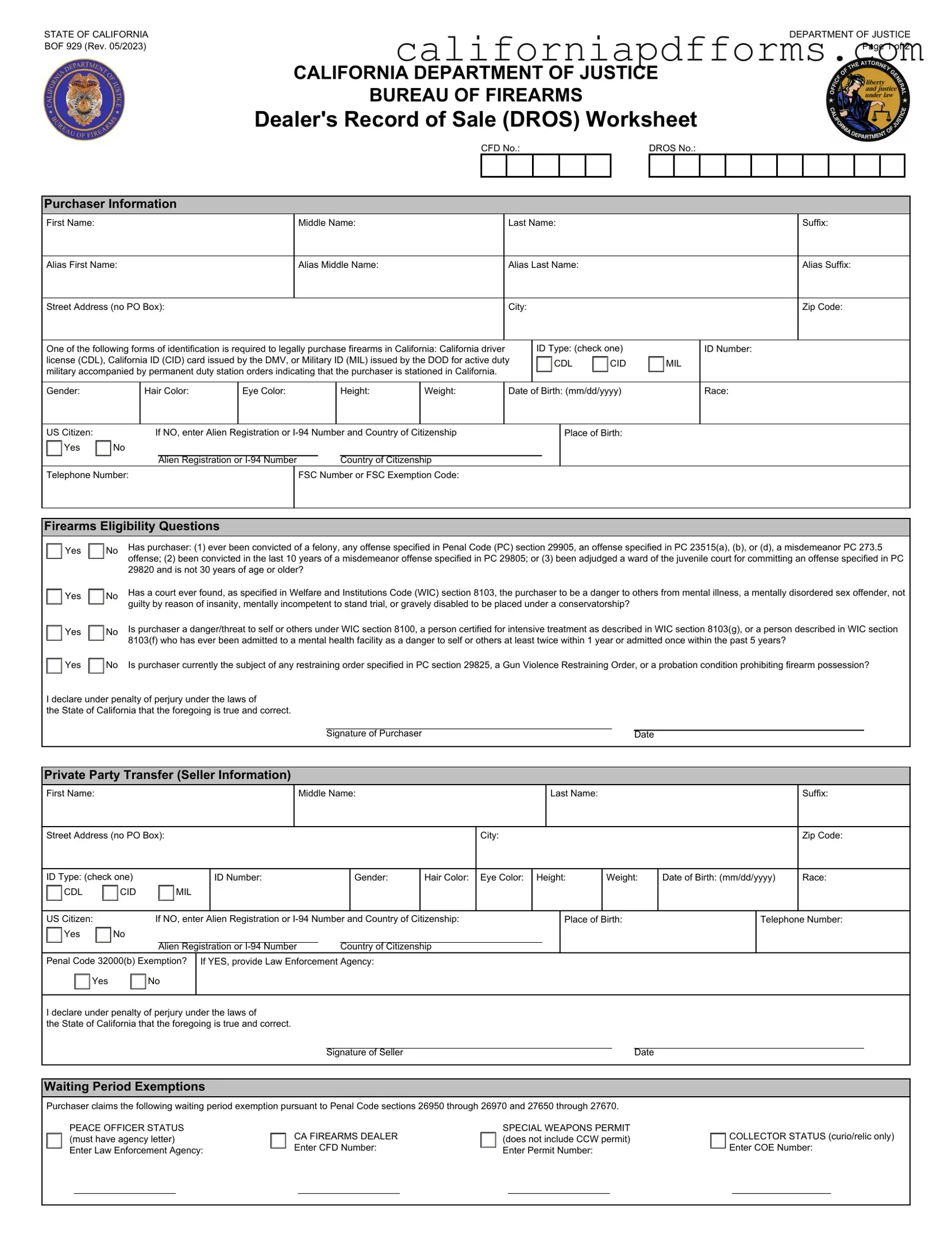Download California Dros Form
The California Dealer's Record of Sale (DROS) form is a crucial document required for the legal sale and transfer of firearms within the state. This form collects essential information about the buyer, seller, and the firearm being transferred, ensuring compliance with state laws. Completing the DROS form accurately is imperative for both parties involved in the transaction.
To fill out the form, please click the button below.
Open Your Form Online
